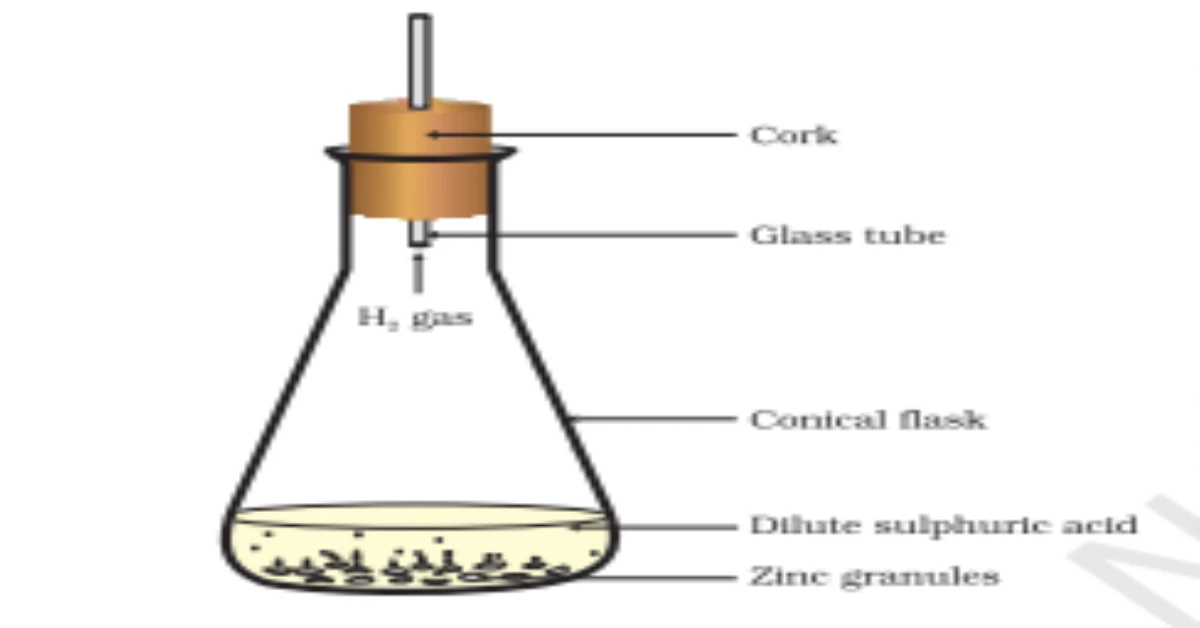NCERT Solutions for Class 10 Science Chapter 1 Activity 1.2

Understanding the Activity 🧐
This activity is a fantastic visual demonstration of a chemical reaction! We will mix two clear, colorless solutions and see a dramatic change happen right before our eyes. The goal is to observe the formation of a precipitate, which is a key indicator that a chemical reaction has occurred. This specific type of reaction is known as a double displacement reaction.
Activity 1.2: Take lead nitrate solution in a test tube. Add potassium iodide solution to this. What do you observe?
Aim of the Experiment 🎯
To observe the reaction between lead nitrate solution and potassium iodide solution and identify the type of chemical reaction taking place.
Materials Required 🔬
- Test tube
- Lead Nitrate (&&Pb(NO_3)_2&&) solution
- Potassium Iodide (&&KI&&) solution
- Distilled water
Procedure & Observation 🧪
Following the steps of the activity leads to a very distinct observation:
- First, a clear, colorless solution of lead nitrate (&&Pb(NO_3)_2&&) is taken in a test tube.
- Next, a clear, colorless solution of potassium iodide (&&KI&&) is added to it.
- Observation: As soon as the two solutions mix, a bright yellow solid substance is formed instantly. This solid is insoluble in water and settles down at the bottom of the test tube. This insoluble solid is known as a precipitate.
Chemical Reaction and Conclusion ⚛️
The formation of the yellow precipitate is conclusive evidence of a chemical reaction. Let’s break down what’s happening at the molecular level.
This is a classic example of a double displacement reaction. In this type of reaction, the positive and negative ions of the two reactants switch places. Think of it like two pairs of dancers swapping partners!
- The lead ion (&&Pb^{2+}&&) from lead nitrate swaps with the potassium ion (&&K^+&&) from potassium iodide.
- The lead ion (&&Pb^{2+}&&) then pairs up with the iodide ion (&&I^-&&) to form lead iodide (&&PbI_2&&).
- The potassium ion (&&K^+&&) pairs up with the nitrate ion (&&NO_3^-&&) to form potassium nitrate (&&KNO_3&&).
The balanced chemical equation for this reaction is:
Here, the yellow precipitate is Lead(II) Iodide (&&PbI_2&&). The other product, Potassium Nitrate (&&KNO_3&&), remains dissolved in the water, so the solution above the precipitate is a colorless &&KNO_3&& solution.
Conclusion and Key Principles ✅
The reaction between lead nitrate and potassium iodide is a double displacement reaction as well as a precipitation reaction. The key takeaway is that one of the characteristics of a chemical reaction is the formation of a precipitate.
- A precipitation reaction is any reaction that produces an insoluble solid (a precipitate).
- A double displacement reaction involves the mutual exchange of ions between two compounds. The general form is &&AB + CD \rightarrow AD + CB&&.
- The state symbols are important: &&(aq)&& for aqueous (dissolved in water) and &&(s)&& for solid.
- The downward arrow &&\downarrow&& is also used to indicate the formation of a precipitate.
Frequently Asked Questions (FAQ) 🤔
What type of reaction is demonstrated in Activity 1.2?
Activity 1.2 demonstrates a double displacement reaction, which is also a precipitation reaction because an insoluble substance (precipitate) is formed.
What is the color of the precipitate formed when lead nitrate reacts with potassium iodide?
A bright yellow precipitate is formed. This substance is lead(II) iodide (&&PbI_2&&).
Write the balanced chemical equation for the reaction in Activity 1.2.
The balanced chemical equation is:
What is a precipitate?
A precipitate is an insoluble solid substance that is formed from a solution during a chemical reaction. In equations, it is often indicated by a downward arrow (&&\downarrow&&) or the state symbol (&&s&&).
Why is this reaction called a double displacement reaction?
It is called a double displacement reaction because there is an exchange of ions between the two reactant compounds. The lead ion (&&Pb^{2+}&&) combines with the iodide ion (&&I^-&&), and the potassium ion (&&K^+&&) combines with the nitrate ion (&&NO_3^-&&).
Are the reactant solutions (lead nitrate and potassium iodide) colored?
No, both lead nitrate (&&Pb(NO_3)_2&&) solution and potassium iodide (&&KI&&) solution are colorless before they are mixed.
Further Reading 📚
For more information and to read the chapter content, you can visit the official NCERT website: NCERT Class 10 Science Textbook